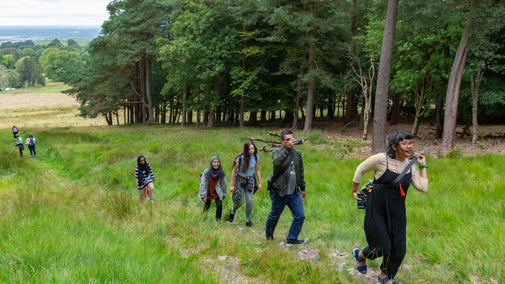Clent Hills short walk
Worcestershire & Herefordshire
This short stroll leads through woodland to the summit of a hill where you can take a close look at the mysterious Four Stones and also be rewarded on a clear day with impressive views of the Welsh Black Mountains on the horizon.
Near to
Clent HillsStart point
Nimmings Wood car park, grid ref: SO938807Trail information
Get in touch
Nimmings Wood car park, Hagley Wood Lane, near Romsley, Worcestershire, B62 0NL
Our partners

We’ve partnered with Cotswold Outdoor to help everyone make the most of their time outdoors in the places we care for.
You might also be interested in
Things to see and do on Clent Hills
Enjoy the great outdoors on Clent Hills. Enjoy a bracing walk, an energising run, hunt for signs of spring, have fun with the family or just take in the views.

Outdoor activities at Clent Hills
Enjoy the great outdoors on Clent Hills with miles of bridleway to explore. Find out about the best routes and keeping yourself safe while out walking and cycling on the Hills.

Walking
Explore some of the finest landscapes in our care on coastal paths, accessible trails, woodland walks and everything in between. Find the best places to walk near you.

Staying safe at National Trust places
The special places in National Trust care sometimes come with a few risks for visitors, be it coastline or countryside. Find out how to keep safe throughout your visits.

Follow the Countryside Code
Help to look after National Trust places by observing a few simple guidelines during your visit and following the Countryside Code.

Cotswold Outdoor: our exclusive walking partner
Learn about the National Trust’s ongoing partnership with Cotswold Outdoor. Find out how they help us care for precious places and the exclusive discount available for National Trust supporters.

Walking in Worcestershire and Herefordshire
From a short lakeside stroll to a lengthier rural ramble, there are walks for everyone in Worcestershire and Herefordshire. Discover our pick of the best.

